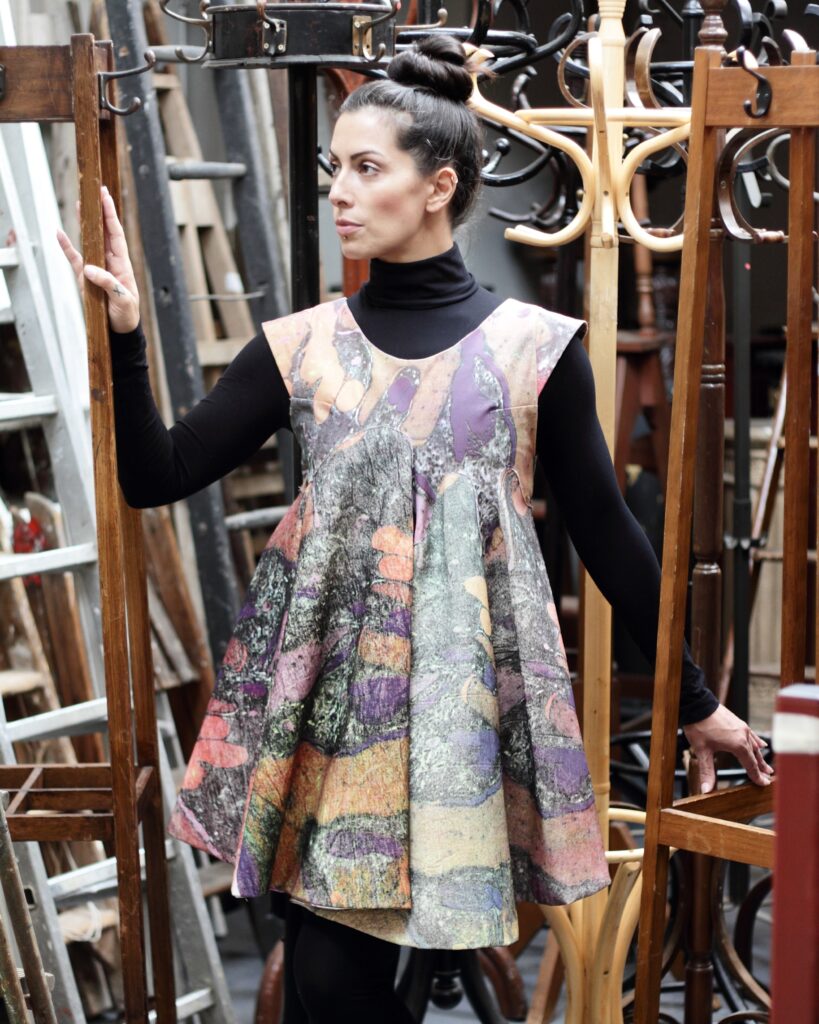Since 2014, I’ve been collaborating with scientists from the Wellcome Trust Centre for Cell Matrix Research at the University of Manchester, making work in response to their research.
Using microscopic bio images of cells and tissues, I create one of a kind print and and surface designs incorporating both hand printed and digital processes. A selection of my fabrics are available from my shop.
In addition to exhibiting in the UK, Europe and Norway, I continue to deliver a programme of creative public engagement.










About The Research
The Wellcome Trust Centre for Cell-Matrix Research is studying how cells respond to chemical and physical signals to build and repair tissues and how changes to matrix lead to diseases of ageing including cancer and age-related macular degeneration.
About the Scientists
Professor Sheena Cruickshank is an immunologist and Professor in Biomedical Sciences and Public Engagement
Immunology is the science of the immune system, the body’s defence against infection. From birth to death, we are bombarded with potential infectious threats that are immune system must recognise and respond to by killing or containing the threat. Yet, the immune system can be harmful too to us too when it isn’t properly controlled as is seen in allergies or autoimmune diseases like rheumatoid arthritis and Inflammatory Bowel Disease. Our research focuses on how our immune responses get started. Events that happen early in an immune response determine whether someone will be able to get rid of an infection or not or whether they get a chronic long-lasting infection or even an autoimmune disease like Inflammatory Bowel Disease. We look at how immune cells and bugs talk to each other and how this communication shapes the immune response in infection, inflammation (e.g. inflammatory bowel disease) and delayed wound-healing.
Listen to Sheena’s TED Talk about the gut microbiome and the importance of a balanced healthy diet here.
Dr Andrew Gilmore studies how cells take their own life and the changes in cancer cells
In all multicellular organisms it is essential that cells only grow and function in the correct context within a tissue or organ. Signals from the extracellular matrix (ECM) provide these positional cues. Appropriate ECM contact not only allows cells to grow and differentiate, but it also functions as a survivalfactor. Cells that do not receive the correct information from the ECM undergo apoptosis, a genetically controlled suicide programme by which damaged, displaced or unwanted cells are removed. Apoptosis is an extremely efficient process, deleting cells quickly and efficiently whilst avoiding harmful inflammatory responses. The importance of ECM-dependent cell survival is seen in the development of invasive carcinoma, one of the hallmarks of which is the ability of cancer cells to move to distant sites within the patient. We are trying to understand how signals regulate apoptosis, with along term goal of identifying how this is different in cancer cells.
Prof Tony Day studies inflammation and how it leads to blindness
Inflammation is part of our body’s natural defence against infection and is required to successfully heal wounds. However, if inflammation continues unchecked (andbecomes chronic) then damage to our tissues occurs – for example, as is seen in the joints of individuals with arthritis. It is our aim to better understand the molecular processes that occur during inflammatory diseases. This includes investigating the role of the innate immune system in age-related macular degeneration and how a protective mechanism, triggered by acute inflammation, may serve to prevent cartilage and bone breakdown.
Dr Christoph Ballestrem studies how cells ‘read’ their environment and how they move
To move over external surfaces, cells need to form adhesions with the extracellularmatrix (ECM) and to control these adhesions in a coordinated manner. Cell adhesion occurs in specialized sites where receptors link the extracellular environment to the cell’ internal ‘skeleton’. These interactions do not all take place at the same time and that they are tightly regulated. Our aim is to study these interactions in live cells to get a better understanding of how cells ‘read’ signals (both chemical and physical) from their environment and how they move across surfaces.
Dr Sarah Woolner studies how cells divide and human development
The tissues of our bodies are extremely complicated at the cellular level, comprising different types of cells arranged with precise geometry. Within this complex system, the direction in which a cell divides is a crucial tool used to shape tissues and determine cell fate. Defects in division orientation have lethal consequences: they cause failures in embryonic development and are associated with cancer.




